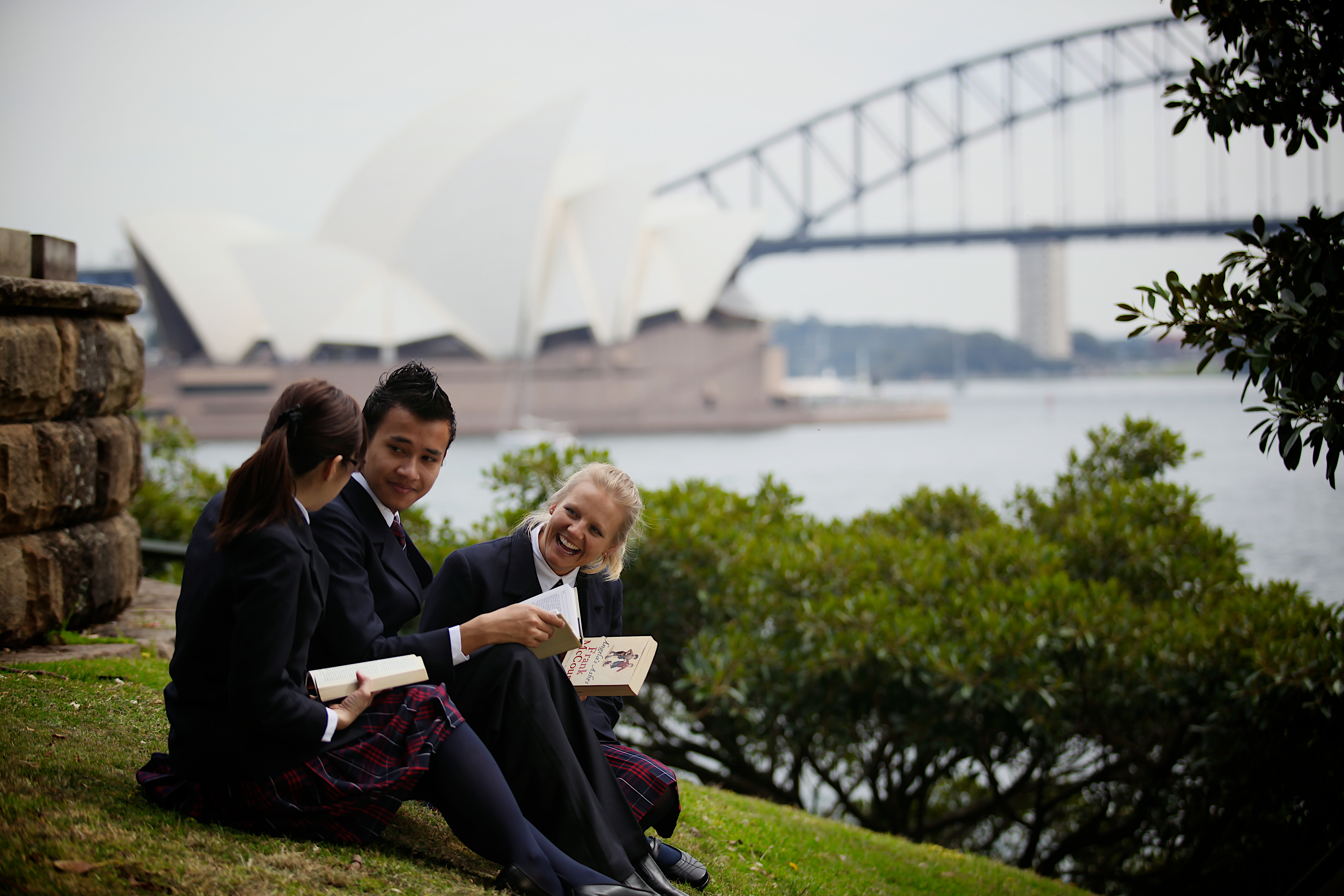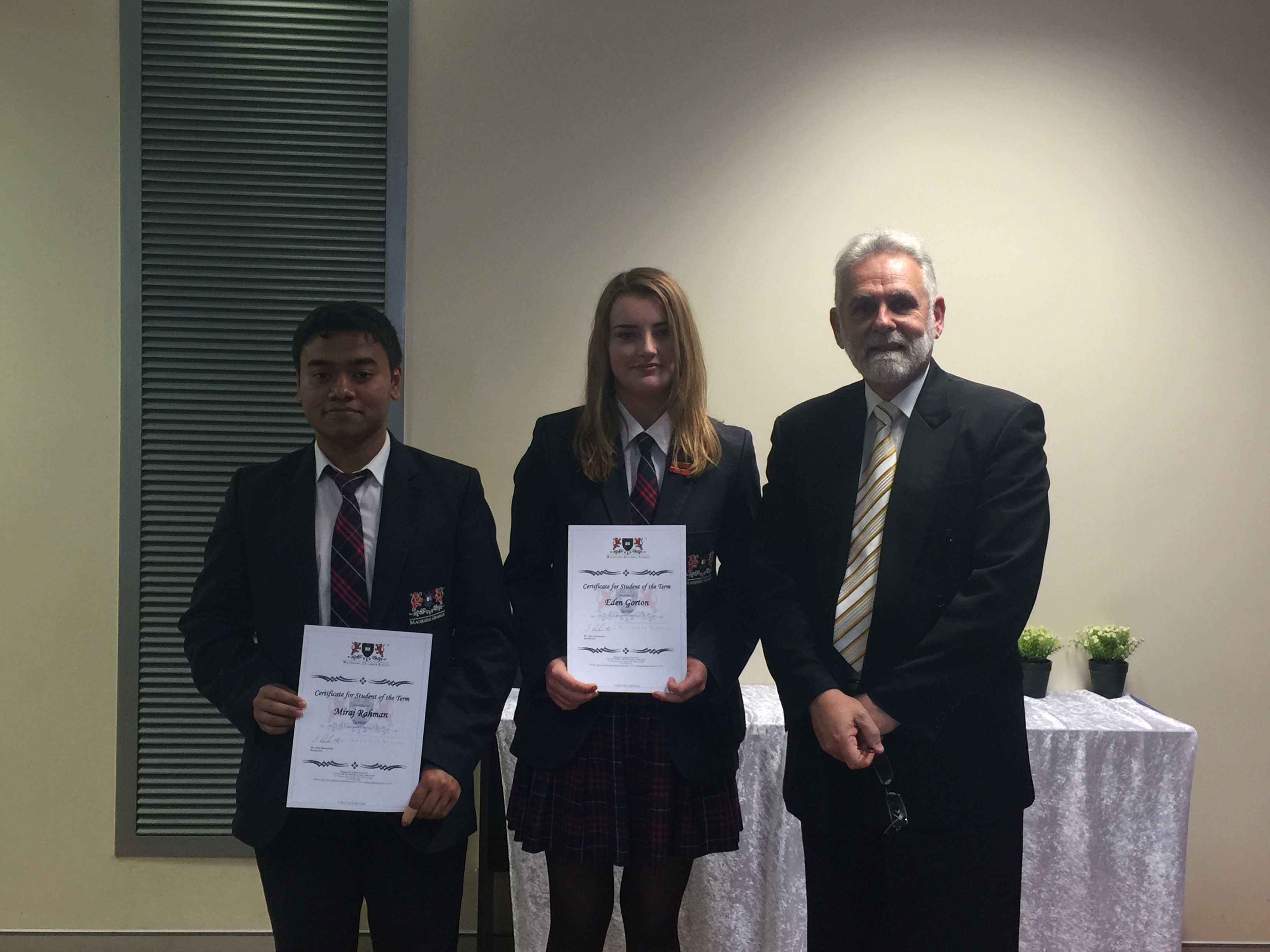
An office block at the south end of Clarence Street in Sydney’s CBD may be an unlikely spot for a high school but breaking new ground is at the heart of the Macquarie Grammar School (MGS) ethos.
Styling itself a “21st century grammar school”, MGS is forging a new school model that capitalises on its urban setting to offer students a sophisticated education with contemporary relevance.
“It’s the way of the future,” says MGS Headmaster Mr Rekouniotis. “Traditional schools have a fence and a playground, we’re in a highrise in the CBD with access to the city’s top cultural and sporting facilities.
“We use city resources to produce a real-life educational program. When our economics students study the stock market, they walk over to the Australian Securities Exchange. Our Art class can walk to the NSW Art Gallery for a lesson. Our Biology students learn about plant life at the Botanic Gardens, we have swimming classes at the Ian Thorpe Aquatic Centre. At a traditional school, visiting those sites would entail an excursion but here students can go on a number of excursions in a day without missing a lesson.”

Mr Rekouniotis says that another aim of the school is to acclimatise students to corporate culture to prepare them for a professional career.
“Our students are far more mature than others and I am sure it’s because of the environment. We let them leave the school at recess and lunch to explore the city. When they go buy lunch they can go to any cafe in town, just like everyone else. They’re influenced by the behaviour of the office workers around them in the city not just the school environment.”
“Students love it here because they are treated like adults, they come and go during breaks as they like. The onus is on them to arrive on time and return to school on time. They are accountable and responsible for their learning. This model produces the greatest growth in students both emotionally and academically that I’ve seen,” Mr Rekouniotis says.
It’s not just students that love the location, parents do too, he says. “Parents are time-poor and it’s easy to travel together with their children to the city and go home with them. Some of the students even have lunch with their parents. Here the students don’t have to be picked up, they just walk to their parents’ workplace after school and they go home together.”

As a small school, MGS has fewer students than the average primary school, but that it is one of its great advantages, says Mr Rekouniotis. No one slips under the radar at MGS. “I have a student welfare officer who oversees every student in the school, liaises with parents, talks with students every day. If there is a problem with attendance or performance, she talks to them to find out why. Are there issues at home? Are they homesick? We uncover problems almost instantly and pass on the information to the other staff. You’re not a number here. I know every student by name and so do the other teachers,” he says.
Of this tight-knit population, approximately half are international students attracted by the school’s excellent academic reputation, Mr Rekouniotis says.
The school’s house system assigns a tutor to every student and teachers provide before and after school learning assistance. MGS has a strong STEM emphasis and encourages girls to pursue these subjects. “Girls and boys are treated equally here and girls do just as well as boys. Our top students at all levels of maths last year were girls,” he says.
Another drawcard for international students is the school’s very effective ESL course, says Mr Rekouniotis. “The High School Preparation program (years 7-10) is an intensive course to progress students into the mainstream of the student body. We’ve learned how to develop English language skills very quickly — usually within two to three terms. I think we’re the only independent school that runs this program.”
“My greatest joy is when I hand out a certificate of High School Preparation to a student. They come here hardly speaking English and a few months later, they’re communicating fluently with you,” he says.
The school’s cosmopolitan makeup informs its atmosphere and academic outcomes, Mr Rekouniotis says. “Our student body reflects the multicultural nature of Australia. There’s no dominant culture in the school. Multiculturalism is strongly espoused and reinforced at the school. The level of respect and support that the students give to each other is enormous. I’ve never seen it at another school.”
“Our students are not necessarily exceptional just very diligent. Their cultural background encourages focus on study. Many of our domestic students come here because of that attitude. They respect education and are determined to do well in school.”
The school’s HSC results speak for themselves, Mr Rekouniotis says. “We’re focused on ensuring that our students go on to university. None of them go into the trades.”

